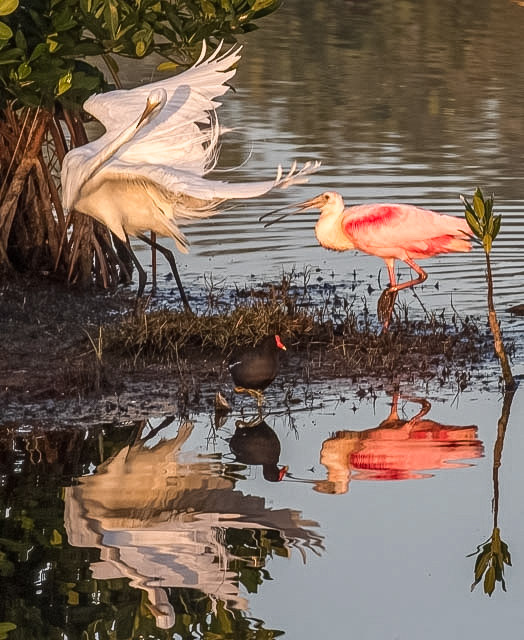






Skygazing posture as spoonbills fly above

Display of vibrant shades of pink during the breeding season

Courtship ritual of bill-biting




Territorials disputes over foraging rights

Spoonbill aggressive moves on a Great Egret - sequence




Spoonbills on parade












